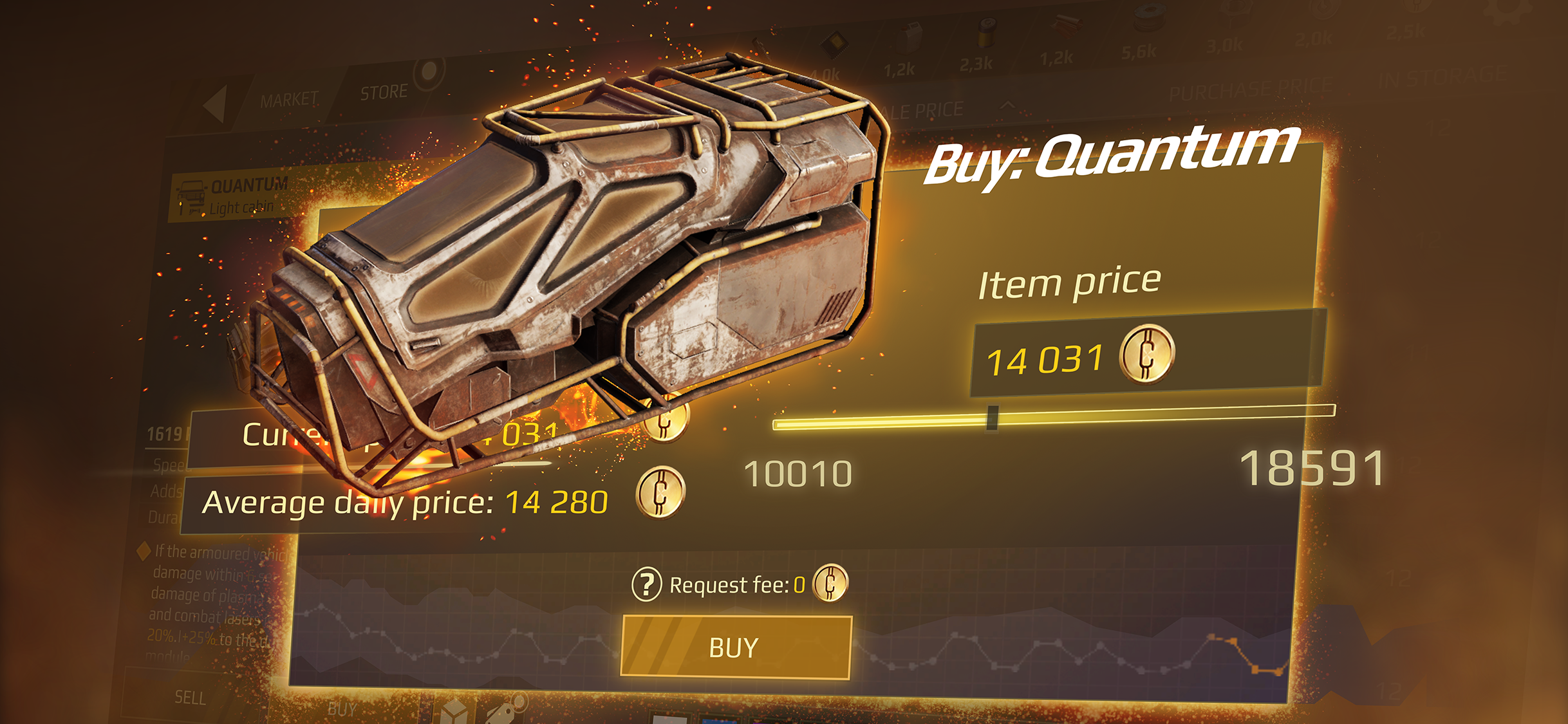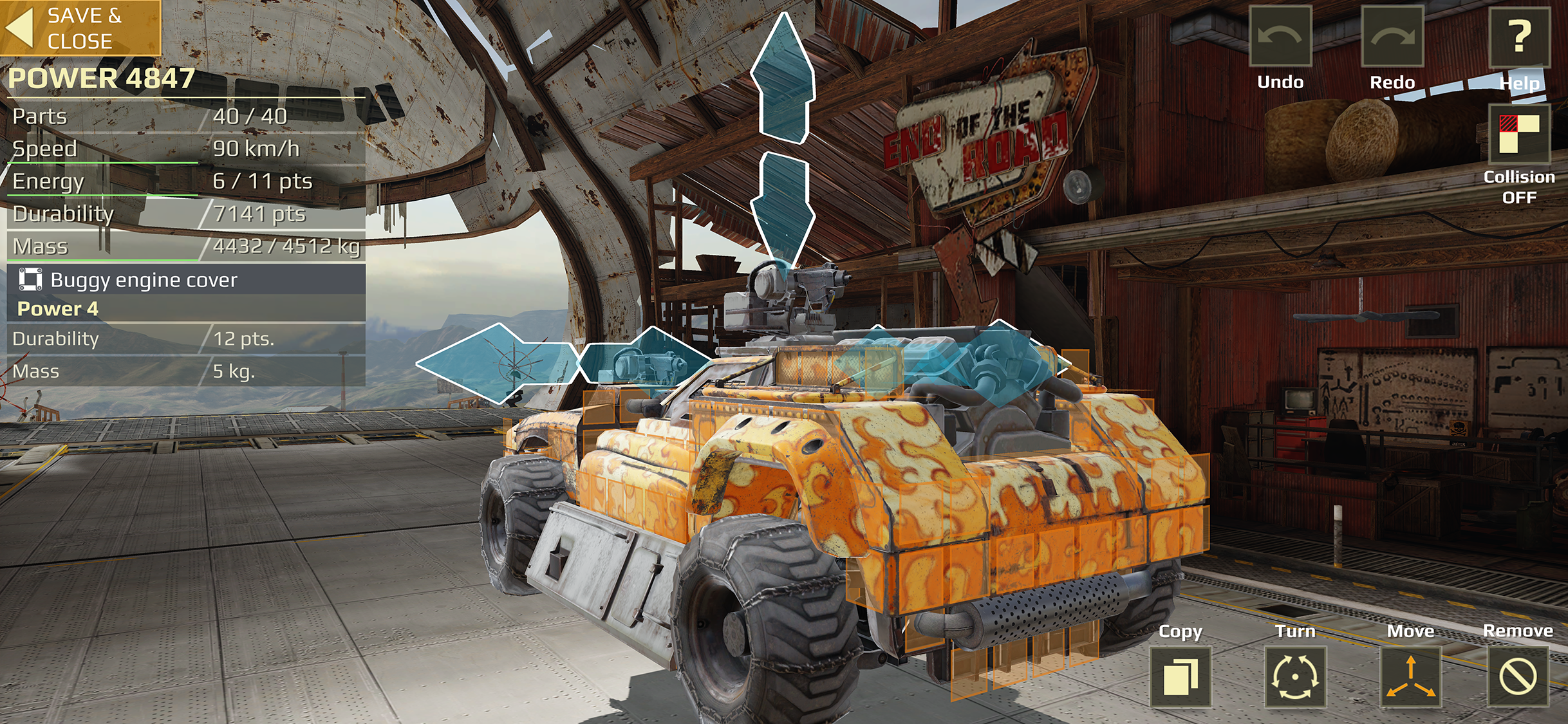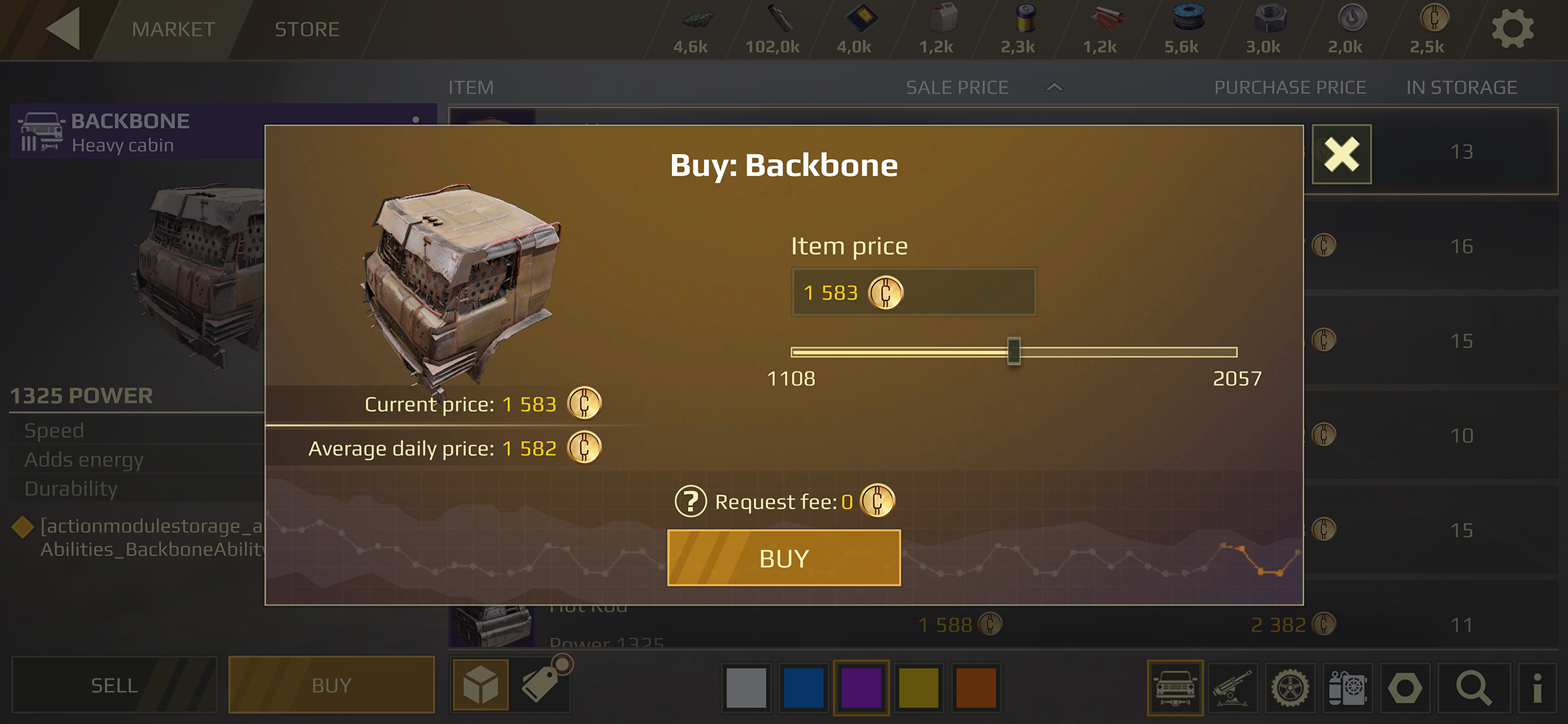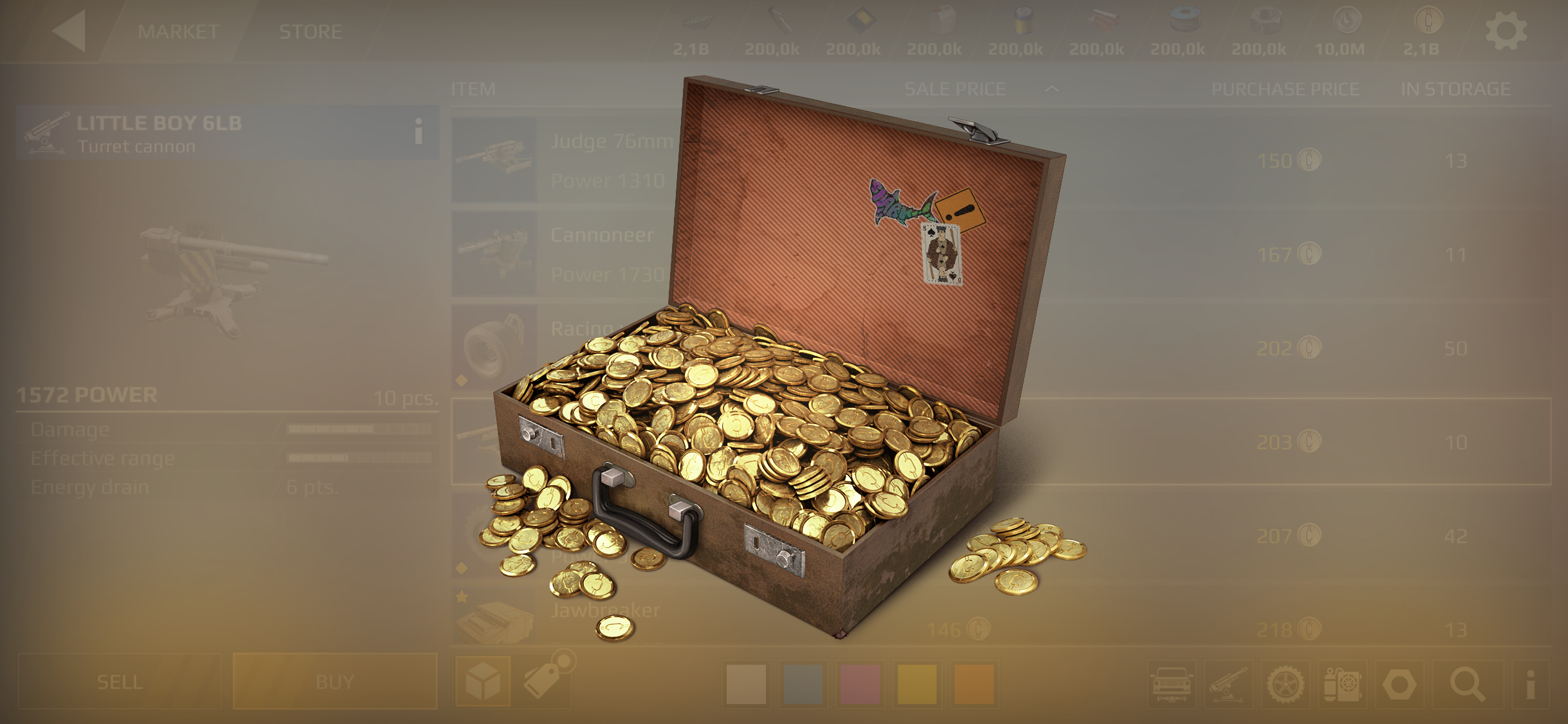Crossout Mobile

Survivors! During the summer, the game went through a lot of changes with the introduction of dynamic pricing in the market and the subsequent rebalancing of the game. Now that the process is almost complete, we would like to tell you more about what exactly was done and why.
First of all, let us explain why we decided to introduce such mechanics. The idea appeared a long time ago. A dynamic market has many advantages, here are a few of them:
Also, we consider it very important that the dynamic market supports the main idea of the Crossout game — the players participate in the development process. Crossout is a building game. The developer, represented by our team, creates the rules for assembling cars and the general rules of gameplay, but we can only predict what game archetypes and game situations will actually appear in the game. What happens next is created by the players. Each player can assemble a unique car for himself, which he will use in the game, thereby creating a unique gameplay for himself and other players.

The free market is one development of this idea. Through supply and demand, players establish the value of essences of the game and, thereby, balance the game economy. So it has been working for the Crossout game on PC and consoles for many years. However, when we initially introduced the mechanics of purchasing and selling parts in Crossout Mobile, we decided to start with a simpler option — static prices. The thing is, we were worried that free trade would be too confusing for mobile device users. In addition, the emergence of a dynamic market inevitably leads to the fact that all users are forced to monitor prices, constantly looking for better deals. Although many of them feel more comfortable when they understand for sure that the price is final and will not change. Thus, at the first stage, we settled on a simpler option — static prices.
Subsequently, we tried to improve this basic system in every possible way and tried different experiments with settings. However, in the end, we came to the conclusion that Crossout Mobile still needs trading with dynamic prices, which are set by the players themselves, and not by the developers.
The dynamic market that we ended up implementing is close to the Crossout market on PC and consoles, which we of course used as a main example. However, there are some features and complexities in that Crossout that we wouldn’t want to copy. In particular, trades for rare goods take a long time (in the absence of lots), a rather complicated interface scares off new players with an abundance of details, the possibility of direct trades provokes strong speculation and a black market, and we wouldn’t want to turn our game into a stock exchange simulator. Therefore, we developed our own system, where prices are formed in the same way by the players themselves, but at the same time, the players do not buy items from each other directly. And it seems that we have got a well-functioning system!
From the point of view of an ordinary player, everything remains simple and convenient, as it was before in the static market — there is a certain price at which you can sell or buy a detail in one click. However, now this price changes over time and depends on the actions of the players: if players buy this detail more often, then its price will increase, and if they sell it more often, then decrease. Over time, the ratio of buying and selling comes into balance, then the price also comes into balance.

We also made it possible for the player to set the price at which he would like to make a deal. This is useful if the player believes that the current price does not correspond to the real value of the item, and predicts its change. As soon as the market price becomes equal to the requested price, the deal immediately takes place automatically, without the participation of the player.
A very important factor is the choice of currency for trading on the market. It was necessary to choose a single multipurpose currency, the value of which would be clear to any player. At first glance, there are two options: silver talers or gold, but in reality only one fits — gold, the premium currency. The fact is that silver talers can be earned in the game in very large quantities, and these reserves would constantly spill over into the market, which would lead to constant inflation. Therefore, we needed a real certain currency, as in real life — gold!
This approach is not only workable from the point of view of the economy, but it is also beneficial for the players themselves. With a market where items are traded for gold, players can earn premium currency by playing and then use it to purchase premium content.

The main trait of implementation of the feature was that the results are almost impossible to test in advance. The dynamic market is not technical, but primarily a social mechanic. The game provides a pricing tool and goods, but the prices are determined by the collective opinion of the players. Yes, of course, we made a working mechanism and thoroughly tested it. Yes, before the implementation, we knew that we would be able to process the required number of deals per unit of time, the server would not be overloaded, and each transaction would be correctly processed in case of a failure, and so on. But what prices will be established in the market? Will they constantly change or freeze? Each player makes his own decision, opinion about every detail and understanding of the fairness of the current price at any given time. There are hundreds of thousands of active players. What will happen in the end?
Of course, we still had some ideas. We understood that there would be some period of initial stabilization of prices, but we did not even know how long it would last. We could only guess which details were likely to rise in price and which would fall in price, but we had no way of predicting in advance what the resulting price ratios would be, just like it happens in the exchange markets in real life. As a result, many things came as a surprise to us.
For example, we understood that prices for similar details would differ depending on the difficulty of obtaining them in the game and popularity among the players. But we coudn’t imagine that the prices for some of them (for example, parts such as the “Cannoneer” and “Chameleon MK1”) would increase tenfold. Another example is resources. We knew that players had a supply of bullet casings and were easier to get in the game, which meant that they would probably be cheaper than other resources. But again, we could not imagine how low it would eventually turn out to be.
Therefore, we did not immediately add all the resources and parts to the market. We added them gradually, thoughtfully studying statistics and feedback, and carefully changing the game balance according to the identified problems. The process of adding essences dragged on for the whole summer and it’s not finished yet. Ultimately, we plan to add all the details (except the newest ones), as well as possibly some customization — when we are sure that the game economy is ready for this.
The second part of the Blog will be released on September 12.